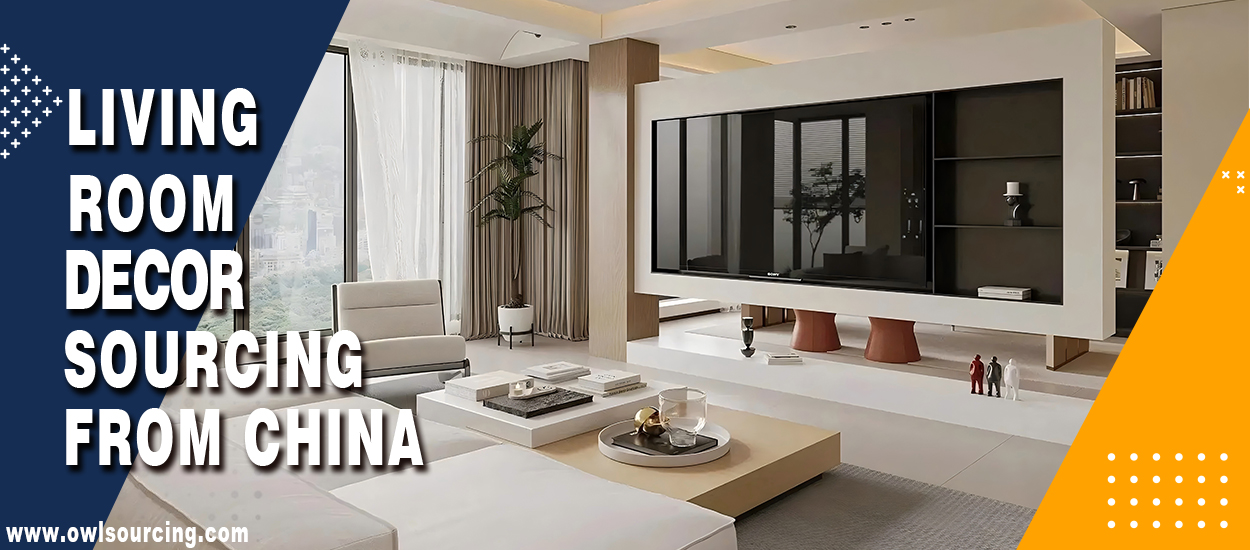You know how much it costs if you have tried to set up your living room locally. American furniture is expensive, so the Chinese market is booming. China exported over $36 billion worth of furniture in 2024 alone.
Even with the recent tariffs, China’s furniture remains affordable. As an importer, you can import from China and sell them for a substantial profit margin.
So, how do you begin? Keep reading as we provide all the necessary details. This guide explores the living room decor available in Chinese wholesale markets. Furthermore, this piece discusses navigating these markets for the best offers. Let’s get started!
Popular Living Room Decor Items You Can Source from China
A wide range of living room decor options is available when importing products from China. You can find various classic items, budget-friendly options, and luxury choices. Here are the major categories:
1. Sofas and Armchairs
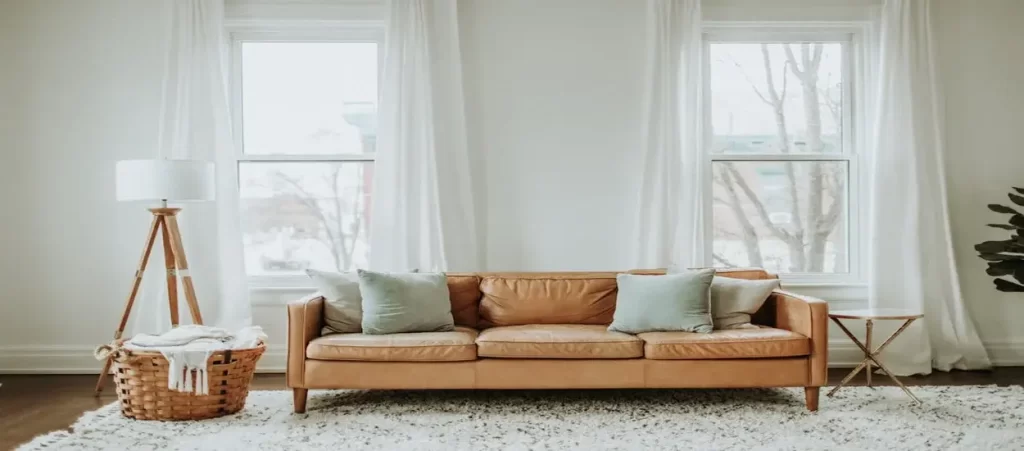
Chinese markets offer a variety of seating styles. Modern minimalist designs, recliners, and even luxury tufted options will be found. The sofas are crafted from high-quality wood, including rubberwood and plywood.
China suppliers also provide custom-made products. There are several large-scale manufacturers in big markets like Yiwu International Wholesale City. You can specify the sofa and armchair you want, and they create it. Alternatively, you can opt for ready-made products that match your needs.
2. Coffee and Side Tables
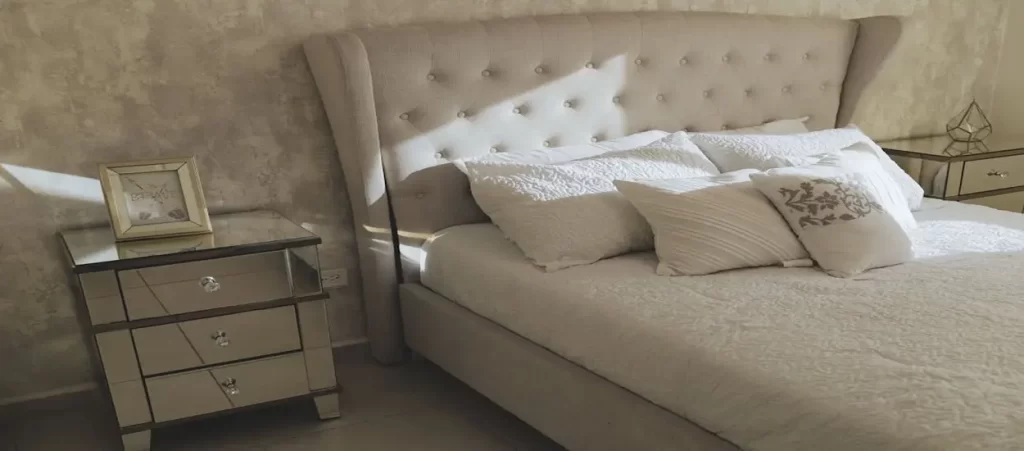
China is home to a wide range of table designs. The manufacturers create the tables from high-quality wood like oak and engineered wood. Aside from the wooden tables, there are glass, marble, and mixed-material tables.
The popular styles in China are metal frames, mid-century, glass-top, and console tables. You can source the products that match your market’s interests.
3. Lighting Fixtures
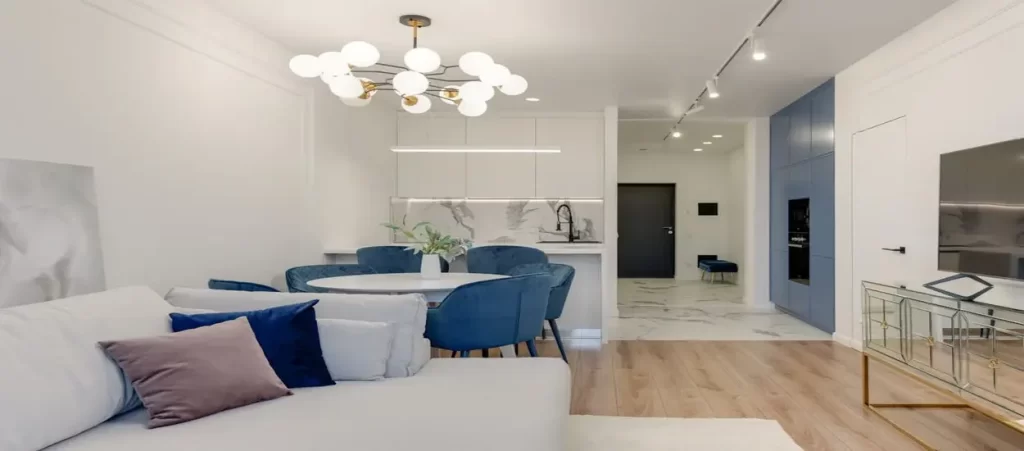
Light brings more life to the room than any living room’s decor. Fortunately, China offers various lighting options. There are chandeliers, LED lights, and even floor lamps. Visit Guangdong to see and buy these products.
If you lean towards that side, the markets dabble in bright lighting. Remember to verify the Chinese supplier’s legitimacy before placing orders.
4. Rugs and Carpets
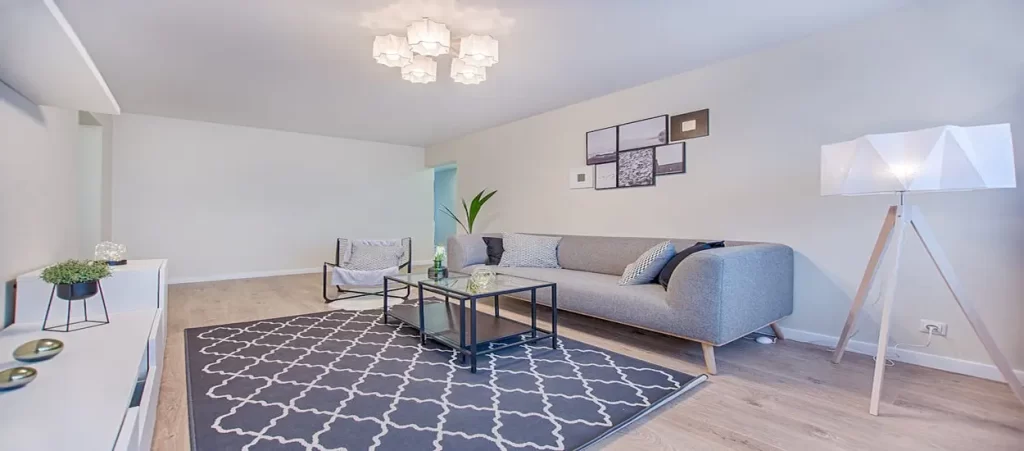
China’s rugs, whether machine-woven or handmade, have a unique style. You can source wool and sisal fibre rugs. The well-known styles are the Oriental rugs and large-area rugs.
You can customise the pattern you want. However, most rugs feature geometric, floral, and character designs. You can find these products at trade fairs in China. Attending the Canton fair is a good start.
5. Wall Art and Decorative Pieces

Wall art and decorative pieces are essential for accentuating living spaces. Visiting Yiwu exposes you to various designs, from tabletop items to hanging pieces. The space features wall panels, handcrafted decorations, and LED light-up art.
Whether you prefer ornamental, antique styles, or something more contemporary, China has it. Product sourcing in China offers a wide range of options.
Are Chinese Suppliers Good at Replicating Trending Living Room Designs?
Yes, they are. China suppliers are well-informed about global design trends. Most Chinese factories have teams of creatives that monitor global trends and developments. It enables the company to direct production to the most suitable location.
You can expect all the trendy designs already in production in China to be released soon. Moreover, they often cost less than the initial trend while retaining similar quality.
Understanding Material Choices: From Solid Wood to Rattan and Beyond
The right material influences how the furniture and decor would look and perform. Hence, verifying the material you want to buy or produce in bulk is essential. Here are the common materials:
1. Solid and Rubber Wood
China manufactures genuine hardwood and softwood products. Popular options are oak, rubberwood, pine, beech, and acacia.
Solid wood offers better quality and durability, but its perks increase the price a bit. Research the different wood types and their perks further.
2. Engineered Wood
This category includes plywood and particleboard. They are common among modern furniture enthusiasts due to their uniformity and affordability.
They are mainly used for shelves, cabinets, and low-cost tables. Hire a sourcing agent for wood products sourcing from China for the best offers.
3. Metal Frames
Steel, aluminium, and iron are common in most contemporary styles. You will find them in both solo and mixed-material living room decor.
The malleability allows it to be used in various styles, ranging from slender to thick frames. They are everywhere, from the legs of sofas and tables to clocks and chandeliers.
4. Rattan and Bamboo
If your market wants to be eco-friendly, these are the materials of choice. The woods are great for indoor and outdoor aesthetics.
You can also repurpose this material for flooring, a component of living room decor. China produces these materials locally and also imports some from Southeast Asia.
5. Upholstery Fabrics
Sofas and chairs are available in a variety of fabrics. Standard materials are linen, cotton, real & artificial leather, and polyester.
China has markets in Jiangsu and Zhejiang, where fabrics are available for pickup. Fabrics are one of the top products imported from China.
6. Glass and Marble Accents
Glass and marble add a spectacular finish to any space. They are great as tabletops, custom-made sculptures, and more.
You can’t spell luxury without both words. Fortunately, if your market is luxury-leaning, China has the supply to meet their needs. Get mirrors, mixed-material furniture, and more when you visit.
MOQ and Customisation: How Flexible Are Living Room Decor Suppliers
Minimum Order Quantities (MOQs) are essential when dealing with suppliers. The big question is, “Are living room decor suppliers flexible?” Here is an extensive breakdown:
1. Typical MOQ Ranges
| Product Type | Typical MOQ | Avg. Lead Time | Est. Retail Profit Margin |
| Wall Art Prints | 50 pcs | 7–15 days | 200–300% |
| Faux Plants | 100 pcs | 10–20 days | 150–250% |
| Lamps & Light Fixtures | 10 pcs | 15–30 days | 100–200% |
| Area Rugs | 20 pcs | 15–25 days | 80–150% |
| Small Accent Tables | 5 pcs | 20–35 days | 70–120% |
Some factories allow 5–10 pieces for standard designs. However, custom products may require 50 or more units. The minimum order quantities vary depending on whether it is customized or not.
Also, the size of the items can dictate the potential MOQ range. For instance, smaller items have lower MOQs, while larger items have higher ones. The difference is due to the production cost.
2. Customisation Scope
As mentioned earlier, customisation often has a high minimum order quantity (MOQ). Most suppliers operate in OEM/ODM models. It means you can tweak your order’s colour, size, and design. However, it comes with a cost.
However, it comes with a cost. Extensive customisation raises the MOQ and also increases production costs.
3. Impact on Pricing
Typically, higher customisation results in increased unit costs. However, a large volume usually offsets it. Most suppliers incentivise large orders by offering a reduced unit price. The more pet cleaning products you buy, the lower the unit cost. However, this unique rule is not set in stone.
Often, you would have to negotiate with the supplier to get this deal. It’s also helpful to know the best way to pay Chinese suppliers. You can put up a better bargain that way.
4. Sampling Policies
Many suppliers offer sample production. However, the samples are usually charged separately. Don’t make the mistake of assuming the price of samples comes with that of production. Each supplier has its sampling policies. Ensure you request this policy to know how to navigate this process.
Sampling is especially crucial when ordering from Alibaba. Pictures are insufficient. Whether you are on 1688 or Alibaba, requesting a sample before placing a large order is recommended.
You can also look for a low MOQ Alibaba supplier to test the product performance on the market. We recommend finding a sourcing agent on Alibaba to help with the search.
You can also use sites like Alibaba to source products. Alibaba alternatives have a similar process. Search for low MOQ suppliers to get a few units.
Do China Suppliers Offer 3D Mockups or Samples Before Mass Production?
Yes. Most reliable suppliers offer a preview of the design. This way, you know what you are committing to before a full-fledged production begins.
This practice comes in two primary forms: CAD/3D and physical samples. The company might opt for a 3D rendition or CAD drawing if the project is complex. This practice features all the necessary dimensions, style, and colour.
Physical sampling is by far the more common option. The supplier creates one or a few units to show what they intend to build. You can inspect the offering to see if it matches your taste.
However, sampling has its costs and policies. Hence, verify this before proceeding and requesting a sample.
How to Transition from Small to Bulk Orders Smoothly
After completing a few small orders and being satisfied, you may want to scale up. Here is how to do that to prevent potential hiccups:
1. Gradual Increase
It is recommended that you don’t hop from ten to a thousand pieces. Instead, make it a gradual process. An example is doubling your account as confidence increases.
2. Readiness Assessment
Before committing to a big order, verify the Chinese vendor. Ask critical questions like production capacity, lead time, machinery, and workforce. You can decide to visit or hire an independent agency to go on your behalf.
Ultimately, try to answer the question, “Are they ready?” Most sourcing agents have this practice as part of their China sourcing service.
3. Warehouse and Fulfilment Planning
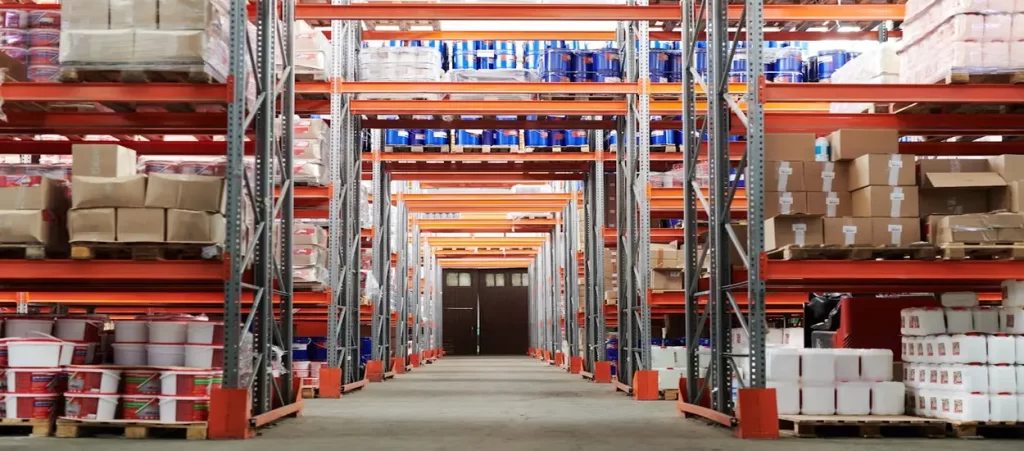
Orders and logistics are proportional. Ensure that you can handle the upscaled production. Is your warehouse large enough? And if you don’t own a warehouse (and use Amazon FBA), ensure they can handle the load. Proactive planning prevents bottlenecks.
4. Negotiate
Use the growing order volume to get better terms. Larger orders allow you to negotiate lower unit prices, increasing your potential profit. You can also use this opportunity to negotiate shipping from China.
5. Risk Management
Larger orders often equate to greater risks. Consider diversifying your production. Hire two or more reliable companies, depending on the order size. Alternatively, you can hire a China sourcing agent.
These agents know how to navigate the rough terrain. They know all the relevant policies, tariffs, and shipping regulations.
How to Avoid Quality Drops When Moving from Small to Large-Scale Production
Most suppliers have no issue handling small batches, but what happens when you scale it up? Quality drops are a massive concern when dealing with large-scale productions.
As an importer, it is essential to understand how to maintain quality. That said, here are tips to ensure the quality standards remain the same:
1. Lockdown the Specs
Provide all the necessary specifications. This information should include the brand, size, dimensions, materials, and finishes. It is helpful to specify all the required details in a specification sheet.
This process also works well in conjunction with a sample. The approved sample will serve as a reference for bulk manufacturing. Chinese manufacturers follow the sample during production and adhere to the agreed-upon standards.
2. Supplier Consistency
One of the leading causes of quality drop is changing suppliers. If possible, stick with the same supplier or factory. Deepen your relationship with your supplier. Please provide feedback on their initial batches so they know your standards and expectations. Perform proper vetting when choosing a supplier, or opt for a sourcing agent who can.
3. Pre-production Checks
Before starting mass production, check for the expected quality. You do this by requesting a pre-production sample or a first batch check. The manufacturer offers you a few units to inspect.
Look for flaws and draw their attention to them immediately. Quality control in China helps prevent issues when products are delivered. You can hire a system for third-party quality inspection in China.
4. Inspections during Production
Don’t wait till pre-shipping to inspect. You or a quality agency can check the production at different checkpoints.
This way, you can identify flaws and address them promptly. Failing to do so is one of the many sourcing mistakes when importing from China.
5. Packaging and handling
Larger batches demand more cautious handling. Hence, you need to ensure that the products are arranged so they are not damaged. Opt for foam, corner protectors, and films. Verify that the supplier adheres to the custom packaging instructions.
You can also hire a reliable China sourcing agent to assist with this. One of the many benefits of working with China sourcing agents is this.
6. Set expectations
Effective communication is crucial for sustaining quality. Regularly reaffirm the quality you want. Constant reminders are important as suppliers often get complacent with regular orders.
You can go the extra mile. Draft a clause outlining possible penalties if the quality falls below the standards.
Real Work, Real Markets: Why Our Clients Trust OwlSourcing!
I remember walking through Foshan’s back alleys. Not the showroom streets but the side paths where the real work gets done. Factories with no flashy branding, just solid craftsmanship.
A client from Europe once joined me on such a sourcing trip. We inspected the stitching of a tufted velvet couch and the smooth edges of a walnut coffee table.
He leaned over and said, “This is the quality we only find in high-end boutiques back home. But here? It’s factory-direct—raw, honest, and surprisingly affordable.”
That moment stuck with me.
Most importers only see what’s online. Glossy images, minimum order charts, and templated replies. What they don’t see is the silent precision of a worker hand-weaving a rattan chair. They cannot see a supervisor personally checking every leg of a sofa for balance.
At OwlSourcing, this is the world we operate in daily. We don’t just match products with your needs. We walk the floors and know which suppliers overpromise and which ones outperform.
You may wonder and ask – why does this matter?
Sourcing is not about getting the lowest quote but getting it right the first time. And that requires more than internet research. It needs eyes on the ground. People who understand materials. People who can tell when a supplier is bluffing or when they’re worth trusting.
That’s what we bring to the table. At OwlSourcing, we’re not just agents. Our team advocates for your quality, timeline, and long-term success.
Read More:
- How to Import Home Decor from China
- How to Import Undergarments from China
- How to Import Power Banks from China
- How to Import Water Sports Equipment from China
Final Thoughts!
Sourcing living room decor from China offers a wide variety and cost savings. However, travelling and sourcing all by yourself is not an easy task.
What about getting some help? If you want the benefits of China sourcing without the stress, there is an alternative. Hire a sourcing agent. Our team of experts is the best choice available to import from China.
We know all the right routes, suppliers, and best products. Contact us today to get a personalised China sourcing service plan. The icing on top is that our China sourcing agent fees are affordable. Check them out and start right away!

